These gripping photos show what life is like for 21 indigenous communities around the world
The Nenets are the indigenous tribe of Russia's Far North. They live in the poorly populated Tundra region, near the coast of the Arctic Ocean. The bloodline community, which consists of the Lednev family members, lives far from civilization and specializes in deer farming. Here, a Nenets boy, Viktor Lednev, sits near a carved reindeer at a settlement.

Consisting mainly of Circassians, Tkhagapsh is one of the few remaining settlements in the Sochi, Russia region. Circassians are a people indigenous to the North Caucasus region, but many were scattered across the globe by a bloody 19th Century Russian military campaign.
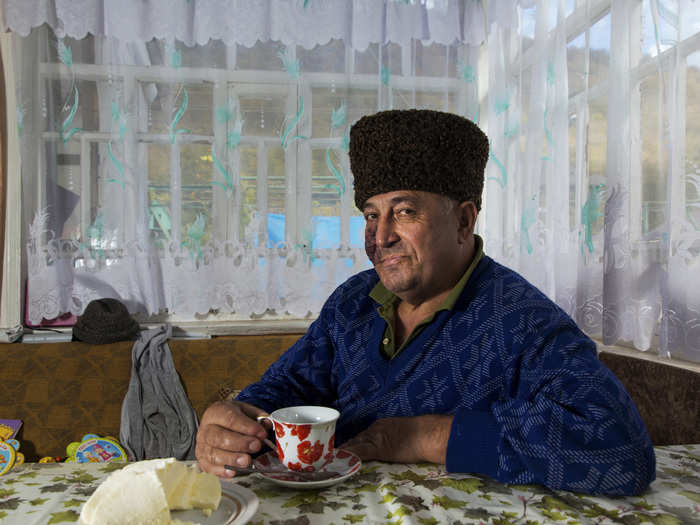
The snowy foothills of the High Atlas mountains in Morocco are home to several Berber villages where inhabitants make a living by farming, baking bread, herding cattle, and the making and selling of honey, olive oil, and pottery. Extreme weather fluctuations and erosion that causes flooding and landslides have led to a drop in agricultural productivity.
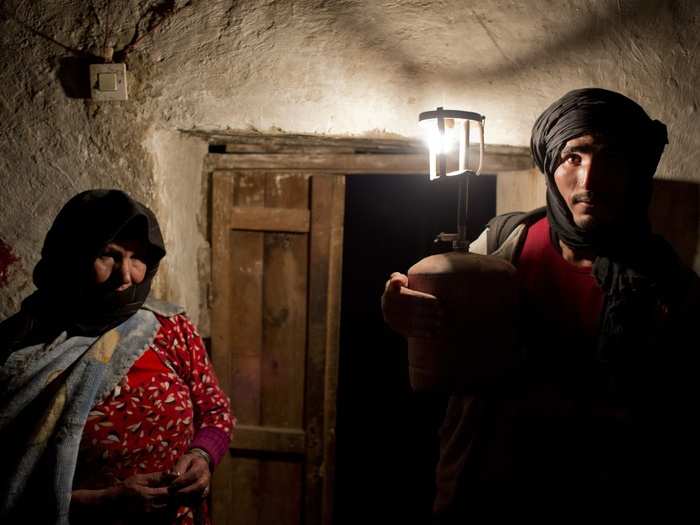
Having migrated Down Under from Africa via Asia between 40,000 and 60,000 years ago, Australia's aborigines are the custodians of the longest unbroken cultural tradition on earth. A connection to the land is practically written in their DNA. Here, a hunter of the Yolngu people carries a crocodile he has just shot dead along the edge of a billabong.

Aboriginal performer Les Saxby plays a traditional "didgeridoo" instrument on the shores of Sydney's Botany Bay during an annual ceremony celebrating the exact spot where the famous British explorer James Cook landed upon Australia. The ceremony is attended by local community groups as part of the ongoing reconciliation process with the local indigenous cultures.
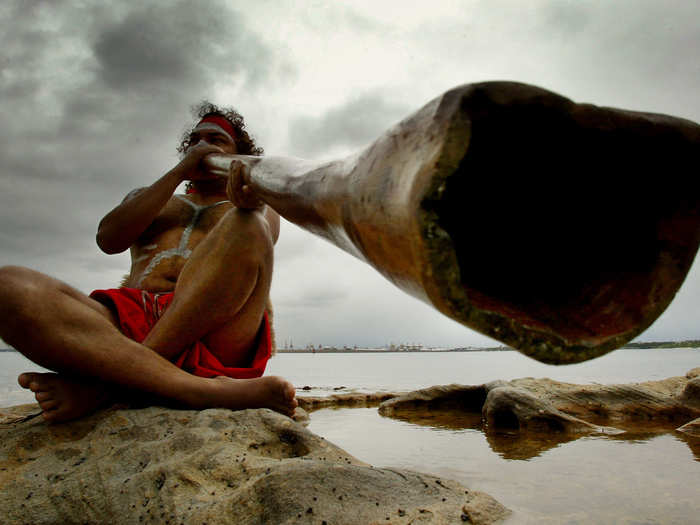
Shot in 2008, this photo shows a woman and her frightened child trying to resist the advance of Amazonas state policemen. They were two of some 200 natives being pushed off their land — a privately-owned tract in the hear of the Brazilian Amazon — that day.
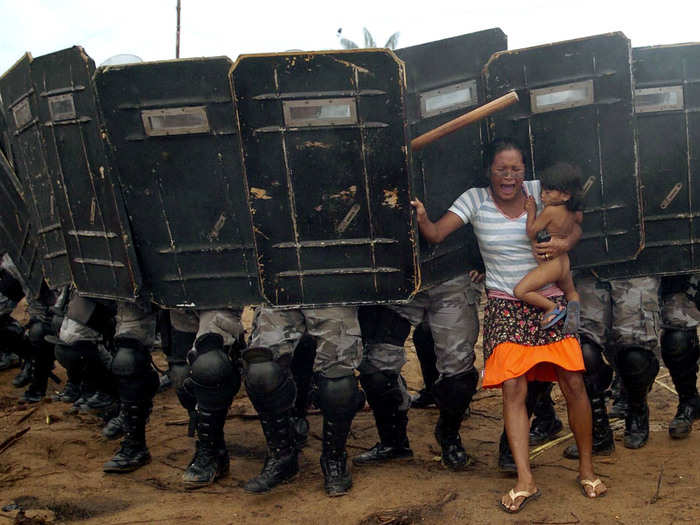
Kypato Kayapo, chief of the Kayapo tribe from the Aukre community, receives post-cataract surgery treatment during the "Expedicionarios da Saude" (Brazilian Health Expeditions) in the Kikretum community in Sao Felix, Northern Brazil. The expedition was run by volunteer doctors who built a mobile hospital to provide clinical and surgical treatments for indigenous tribes and residents across the Amazonian Rainforest.
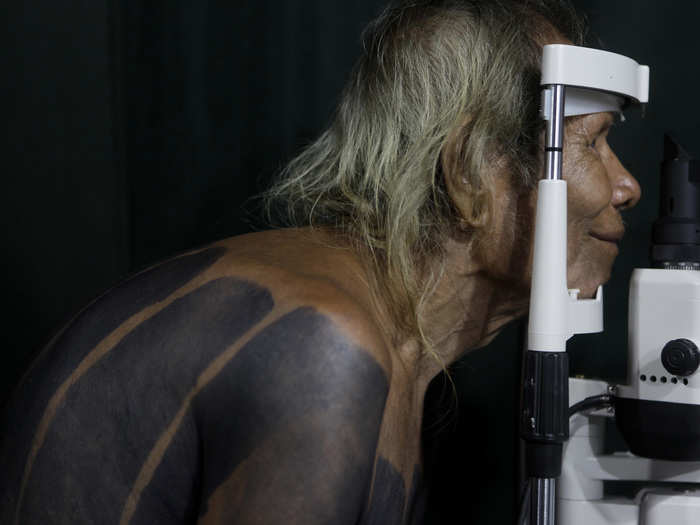
A Munduruku Indian takes photos with a camera left for him to use by a journalist who was expelled from the Belo Monte hydroelectric dam construction site, in Vitoria do Xingu, near Altamira in Para State. Amazon Indians went through the process of demanding that the Brazilian government hold prior consultations with indigenous peoples before building dams that affect their lands and livelihoods, an issue that has sparked years of protests against the Belo Monte dam.
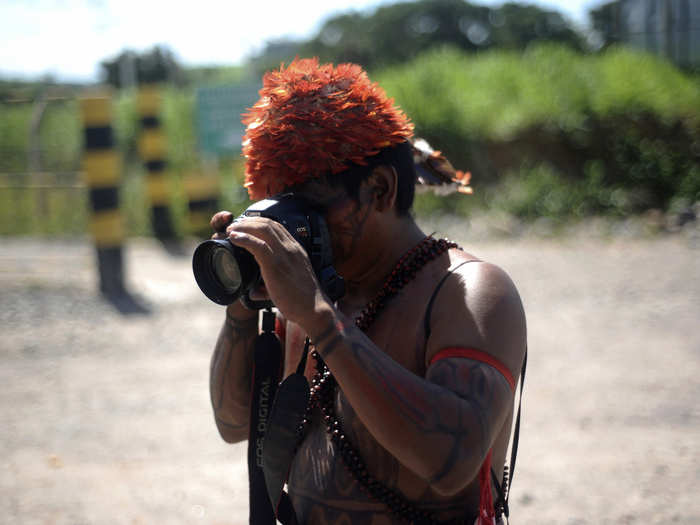
A mysterious, table-topped mountain on the Venezuela-Brazil border that perplexed 19th Century explorers and inspired "The Lost World" novel is still attracting modern-day adventurers. Once impenetrable to all but the local Pemon Indigenous people, now several thousand trekkers a year make the six-day hike across Venezuela's savannah. While that is a help to Venezuela's tottering tourism industry and brings revenues to local communities, it is also scattering a prehistoric landscape with unwanted litter.
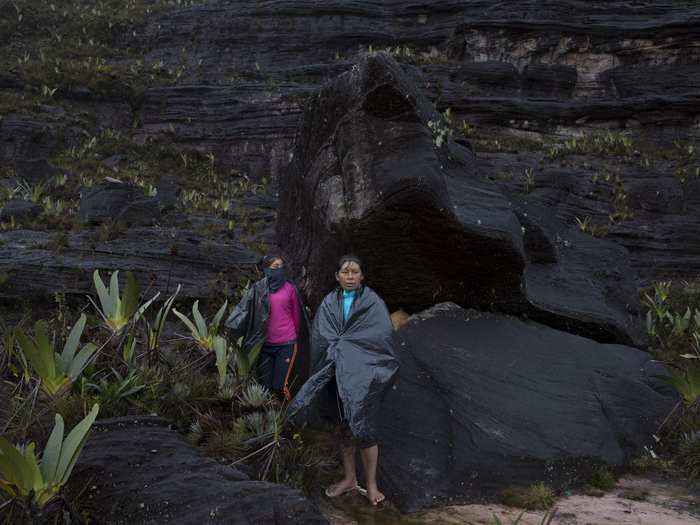
The Guarani tribe, located near Dourados, Brazil, is immersed in a bloody conflict with farmers over possession of their ancestral land. The conflict highlights the risks being run by an agricultural superpower, whose leftist government is trying to sort out centuries of ethnic disputes over ownership of the land from which much of the nation's wealth sprouts.
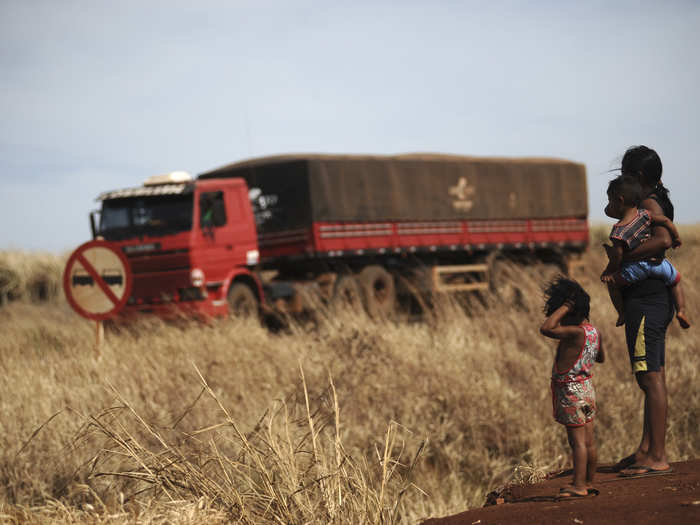
Dozens of Amerindian ethnic groups — the original residents of Venezuela's forests, coves, and swampy plains — now make up only a fraction of the 29 million people in the South American country dominated by the oil industry. Like similar groups across the world, their habitat and way of life in a vast, long-neglected region of forests and waterways around the Orinoco river are increasingly threatened.
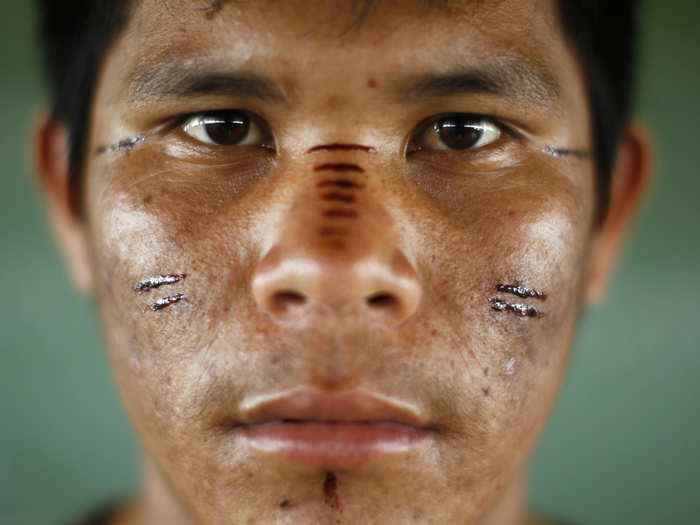
A Kambeba Indian, Dream Braga, has been shooting fish with a bow and arrow for most of his life. In the Amazonian village where he grew up, that was what kids did for food and fun. He participated in the Indigenous Archery Project, which recruits Amazon native children to compete with modern archery equipment and try for a place on the national team, with the 2016 Olympics in Rio de Janeiro as their ultimate goal. After training with Olympic coaches for three months, he has been promoted to Brazil's national team.
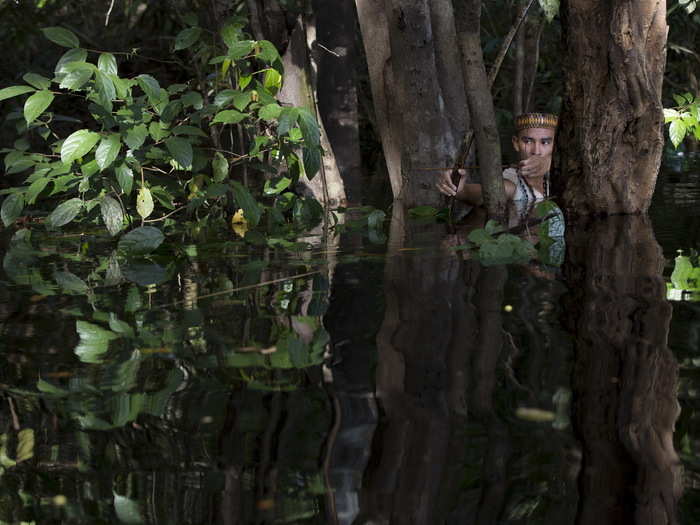
The Uros islands are a group of 70 man-made, floating islands on Peru’s Lake Titicaca. The Uros people fish and hunt, but tourism is their main source of livelihood. Here, an Andean man and a woman depicting Inca's legendary characters, Manco Capac and Mama Ocllo, pose for a portrait on one of the floating islands.
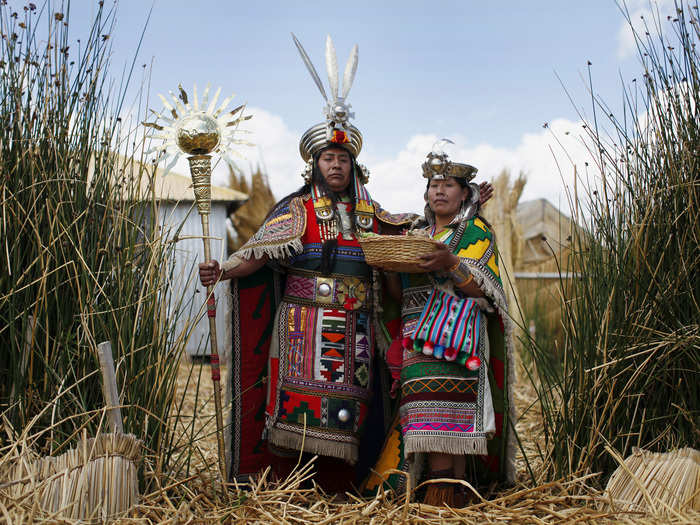
Isolated Peruvian tribes like Mashco Piro have clashed in the past with loggers, poachers, and drug traffickers who invaded their jungle enclaves, but anthropologists say the lure of modern tools is now tempting them closer than ever to far-flung villages and tourist camps.
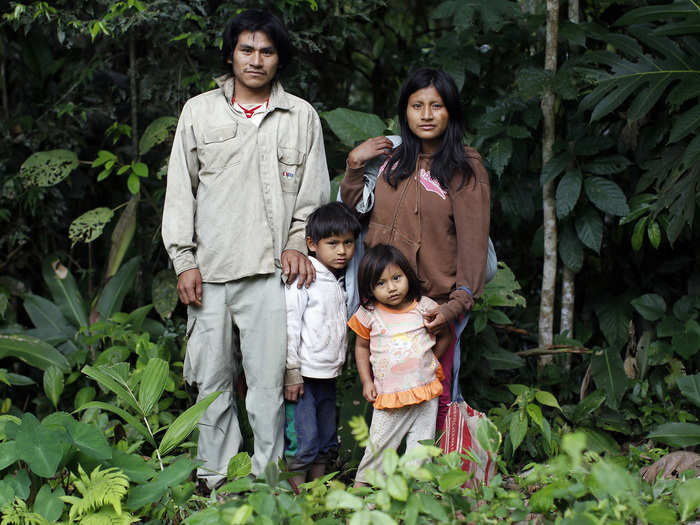
Members of the Mashco-Piro tribe observe a group of travelers from across the Alto Madre de Dios river in the Manu National Park in the Amazon basin of Southeastern Peru, as photographed through a bird scope. Survival International has the Mashco-Piro tribe listed as one of around 100 un-contacted indigenous tribes in the world.

Luz Elaida Queragama, a member of the indigenous Embera Katio tribe, cries beside the coffin of her four-month-old daughter, who died in Cali, Columbia. Queragama discovered that her baby was not breathing one morning. Members of the displaced Katio community came to Cali in 2013 following an armed conflict that was raging in Pueblo Rico, Risaralda. They now live in poverty in Cali, in three houses that are inhabited by 43 families.
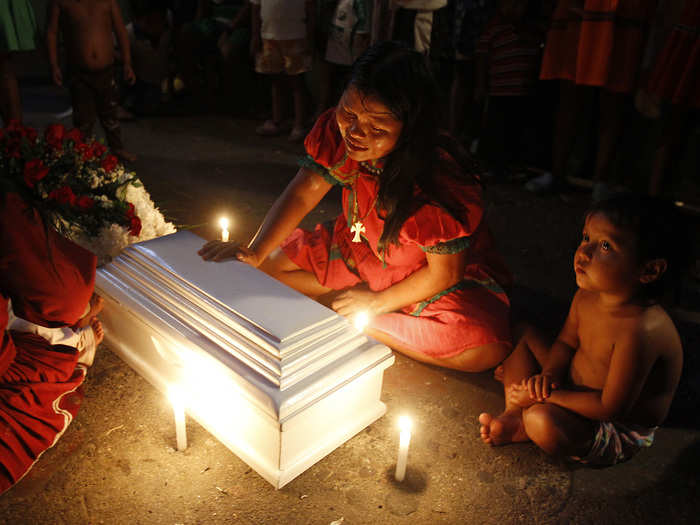
A man dressed as a traditional Zapotec, also known as "Muxe," walks inside a women's bathroom during a party in Mexico City. Anthropologists say the tradition of blurring genders among Mexico's indigenous population is centuries old but has been revived in recent decades due to the gay pride movement. Mostly of ethnic Zapotec descent, they're widely respected in Southern Mexico.
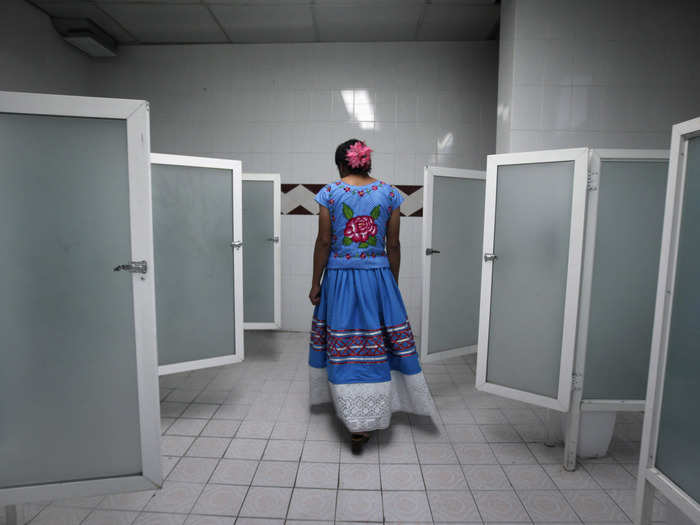
A Hualapai Tribe councilwoman stands near new buildings on the Hualapai Indian Reservation in Peach Springs, Arizona. The tiny Hualapai nation, in a bold move that could serve as a test of the limits of the sovereign power of Native American tribes over non-members, exercised its right of eminent domain to take over the management of the site and kick out the non-Indian developer.
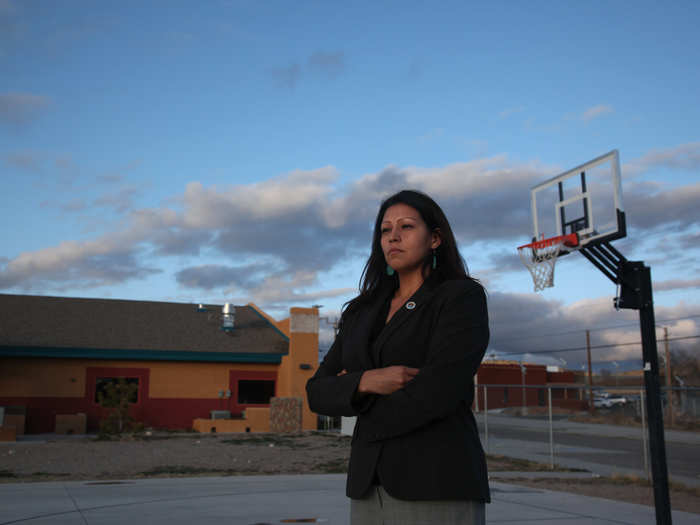
A Pokot girl, covered in animal skins, walks to a place where she will rest after being circumcised in a tribal ritual in a village about 80 kilometers from the town of Marigat, Kenya. The traditional practice of circumcision within the Pokot tribe is a rite of passage that marks the transition to womanhood and is a requirement for all girls before they marry.
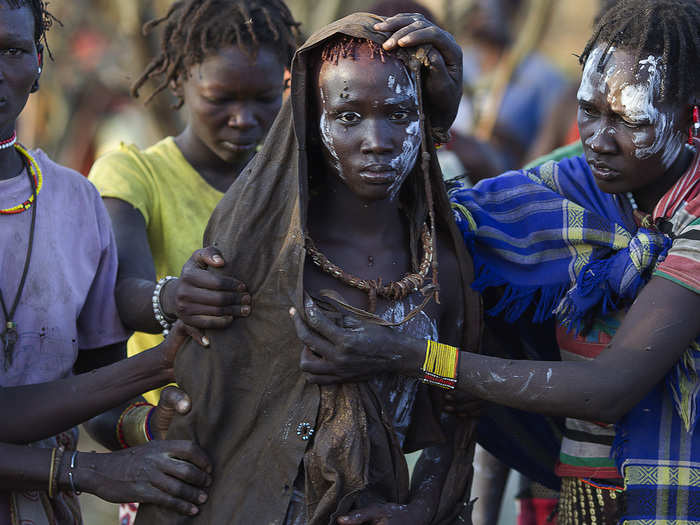
The Nyi-Bo family sits in a bamboo hut in the remote village Dongoi in Sudan. The family is a part of the indigenous tribe Jur. The patriarch of the family was killed in ethnic clashes with the Dinka tribe.
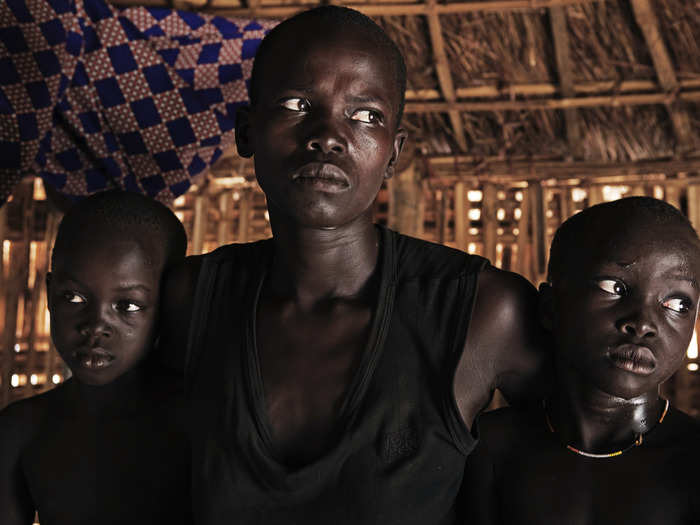
Albinos born on the sun-scorched group of islands off Panama's Caribbean coast are venerated as "Children of the Moon," which make up between 5-10% of the roughly 80,000 indigenous Gunas who live on the mainland of the Guna Yala region and its islands. With their sensitive skin and eyes, young Guna albinos must be shuttled to and from school, avoiding the heat, while they watch their friends play in the streets.
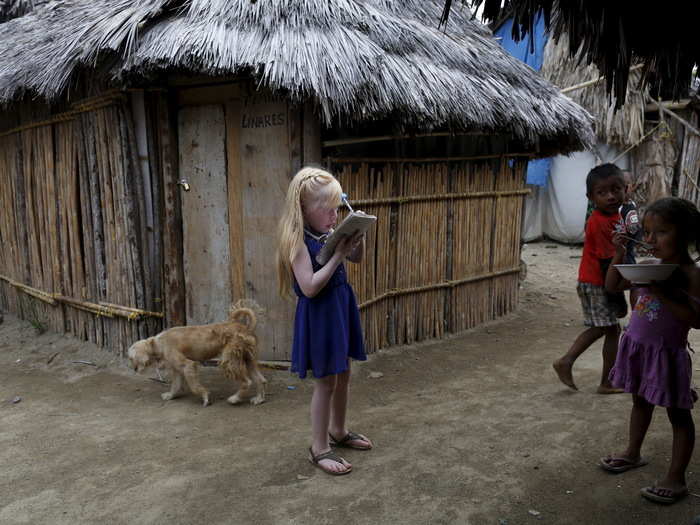
Popular Right Now
Popular Keywords
Advertisement